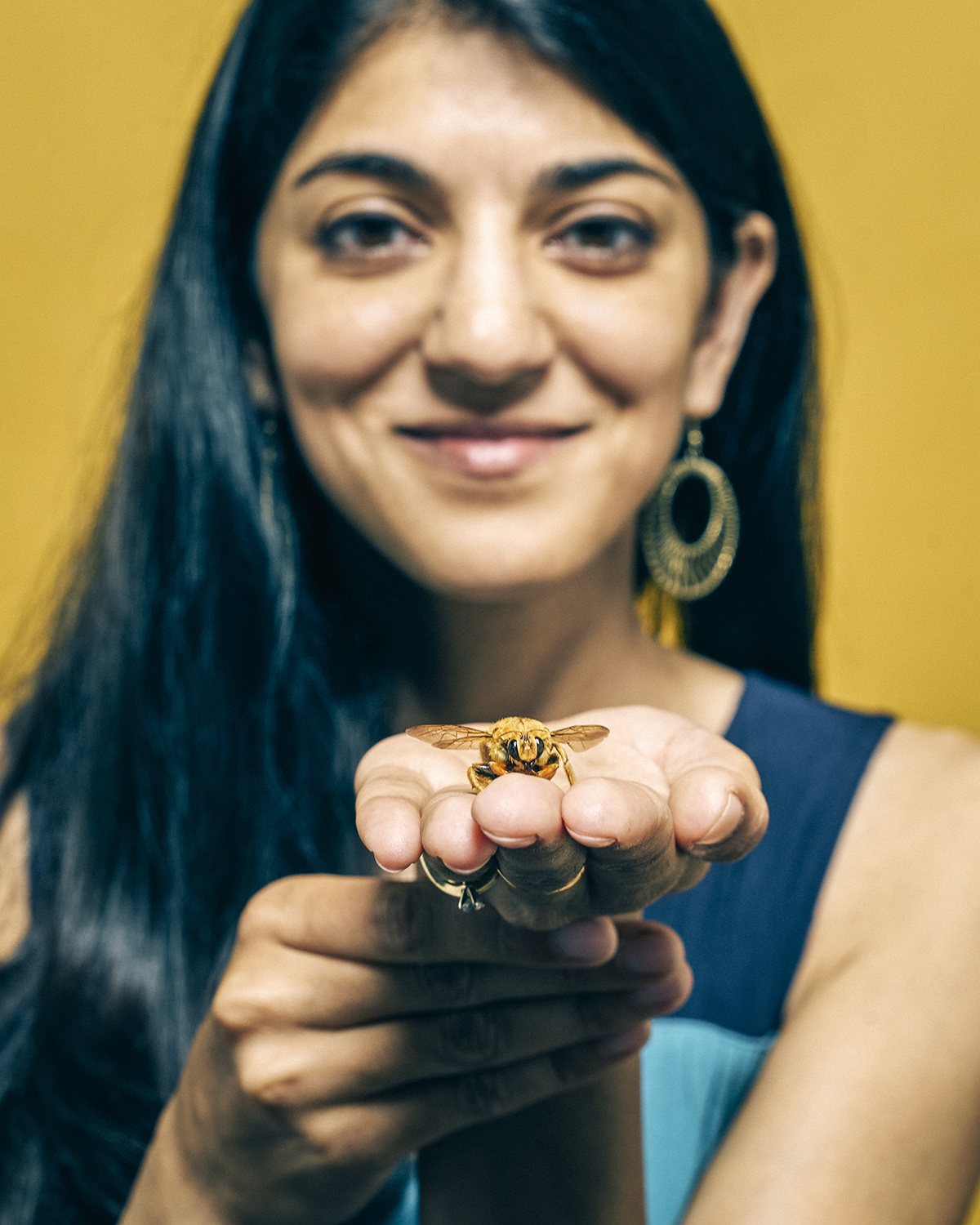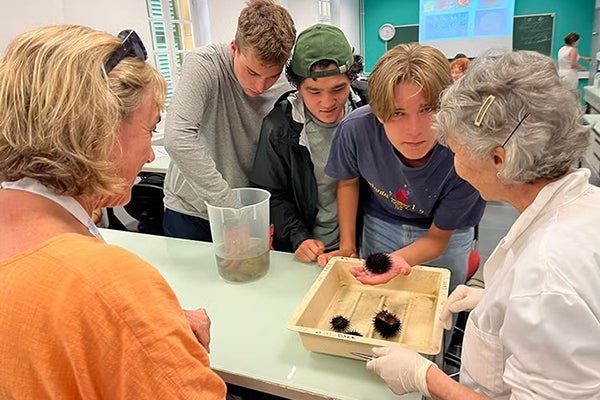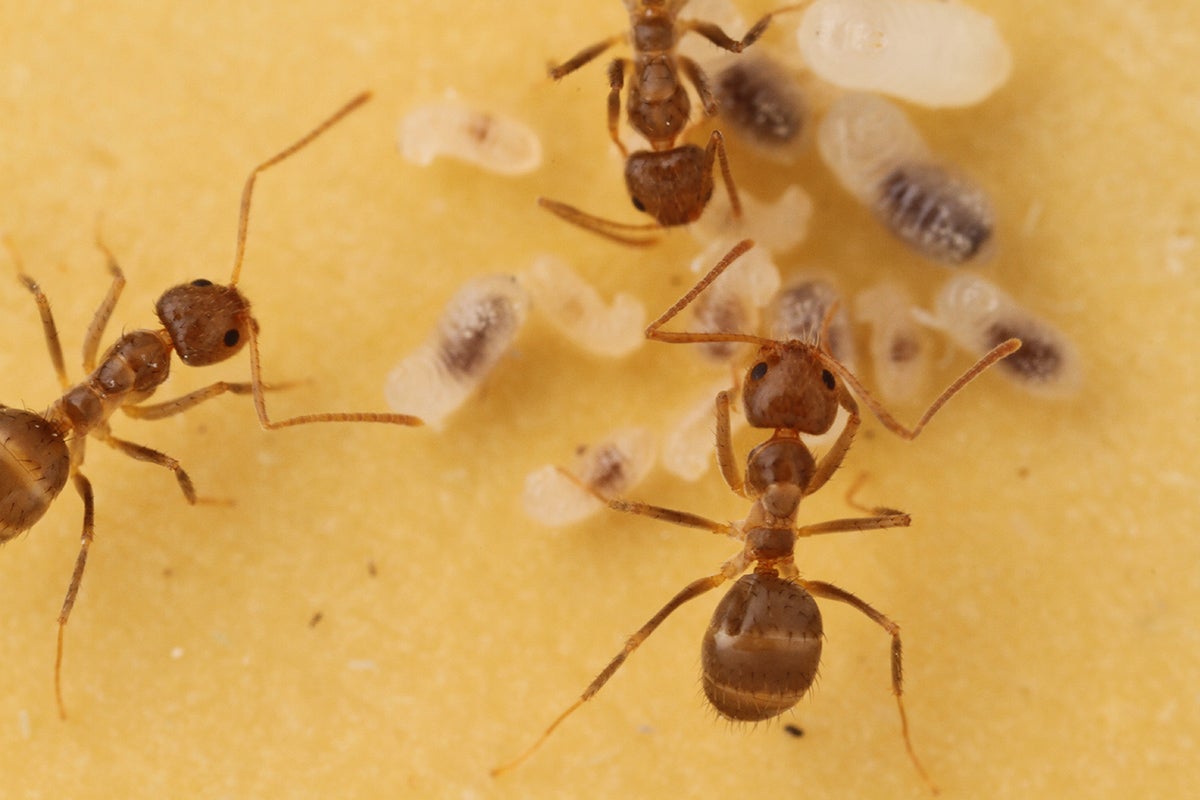What’s the Buzz: Reflecting on a Life's Work Inspired by Pollinators
Shalene Jha has been interested in pollinators her entire life. Now, as an assistant professor, she studies the interactions of native bees and plant communities for a living.

Shalene Jha
A Michigan native, Jha was recently notified of two exciting awards: One, a grant through the U.S. Department of Agriculture, will support the study of pollination services in urban gardens; the other, a State Wildlife Grant (via the U.S. Fish & Wildlife Service), will fund prairie restoration in an effort to revitalize and monitor plant-pollinator interactions across Oklahoma and Texas. As pollinators prepare for winter, we asked Jha to expound on her area of expertise.
How did you first get interested in pollinators?
When I was a young child visiting my family in India, I spent many afternoons with my grandmother walking through her small mango orchard, where she would describe her work and explain the importance of all the ecological factors involved in the creation of a single delicious mango, including the important role of pollinators … and I was fascinated.
What other experiences influenced your career path?
Many years later while in college, I spent a semester abroad in Ecuador, where I visited my first shade-grown organic coffee farm. I was absolutely blown away by the diversity of birds, bees, butterflies and other animals living in this habitat. The farmers preserved a rich diversity of rainforest plants, which supported all these pollinators. The pollinators in turn improved crop yields. I decided then that I wanted to study pollination in agroecosystems, urban gardens and other human-managed landscapes where we most need animal-mediated pollination services.
What benefits do pollinators provide?
Pollinators are responsible for the increased quantity, quality and stability of over 60 percent of the world's crops, and they pollinate more than 85 percent of global plant species, worth over $200 billion annually across the globe. Most crops grown for their fruits, nuts, seeds, fiber and hay require pollination by insects. Pollinators also benefit us through the non-crop plants they pollinate, including increased carbon sequestration, erosion control, water filtration and microclimate regulation.
What do you enjoy most about your research?
I truly love observing plant and pollinator interactions in the field. And I deeply enjoy discovering new and unexpected relationships between these organisms, such as finding out that an expected pollinator is actually a nectar robber — an animal that visits a plant and drinks its nectar but does not deposit pollen on the stigma.
What's one of the more surprising things you've learned?
Farmers didn't think pollinators provided much benefit to certain crops which can self-pollinate, such as cotton. But we recently showed that in South Texas, pollinators can boost cotton production by more than 18 percent, potentially worth millions of dollars each year for farmers across the state. Further, we showed that robust and diverse pollinator communities can be supported in cotton landscapes by providing small amounts of pollinator habitat. This can be as simple as keeping a floral hedgerow or maintaining a natural wooded buffer or an unmowed irrigation ditch. These changes are small scale but can have large impacts on the pollinator community and cotton crop yields.

Shalene Jha
What is the hardest part of studying pollinators?
Many insects and plants only emerge or flower for a few days at a time. This makes it tricky to study species-specific processes over multiple years, as small changes in temperature or rainfall patterns can alter these very short emergence periods. In graduate school, during an El Niño, I traveled all the way to my remote study region in Chiapas, Mexico, only to find out my focal plant species had already flowered, nearly two months early. I have come to learn that science is completely at the whim of ecological forces beyond our control.
You're collaborating with the Wildflower Center and the university's School of Architecture on a "living wall" on campus. Can you elaborate?
It's a honeycomb-shaped structure on the side of Goldsmith Hall with cells containing soil and plants that provide mini-habitats. My student Kim Ballare helped select pollinator plants and bee nesting habitat. Before the wall was erected, we monitored the area for pollinators and observed their foraging activity. And we are currently monitoring the wall to see its impact on the local pollinator community.
What role do native plants play in helping pollinators?
Native plants provide both food and nesting opportunities. Butterflies use plants as hosts for their larvae and also consume nectar. Bees consume pollen and nectar to fuel themselves and collect pollen and nectar to feed their offspring.
How can people help pollinators in their own backyards?
Our work in urban gardens across Texas reveals that gardens with greater native plant abundance and diversity — as well as diverse nesting habitat — support greater bee diversity.
Are there other factors gardeners should take into account?
We sometimes forget that pollinators are out there trying to eat a good meal and feed their offspring. They can't just eat for a few periods and then go hungry. In our research, we found that native bees tend to forage farther from home at the end of summer, when fewer plants are blooming. That means they are spending more energy and are more vulnerable at that time. To help them, farmers, land managers and home owners should consider not only providing a diversity of flowering plants, but also plants that flower specifically during such stressful times.
What is the biggest misconception people have about gardening for pollinators?
One of the biggest misconceptions is that all bees nest in hives above ground. In fact, most bees are solitary, meaning they do not nest in social groups, and instead nest underground. Thus, it is essential to keep patches of exposed, bare ground and old wood available for their nesting. A truly bee-friendly habitat is not simply mulched and planted with flowers.
Native bees, and to a lesser extent domesticated bees, are declining sharply around the world. What makes you hopeful?
Studies from my lab and many others continue to show that even local management practices within a small farm or backyard, such as enhancing flowering and nesting resources, can increase pollinator visitation and persistence. Our research also reveals that pollinators respond quickly to restoration efforts and are capable of recolonizing and dispersing much further than we had ever expected. All of this reveals that simple land management practices can be implemented to improve pollinator habitat, and it is not too late for these practices to make a large impact on the pollinator community.
This article originally appeared in the Fall 2016 issue of Wildflower Magazine.



